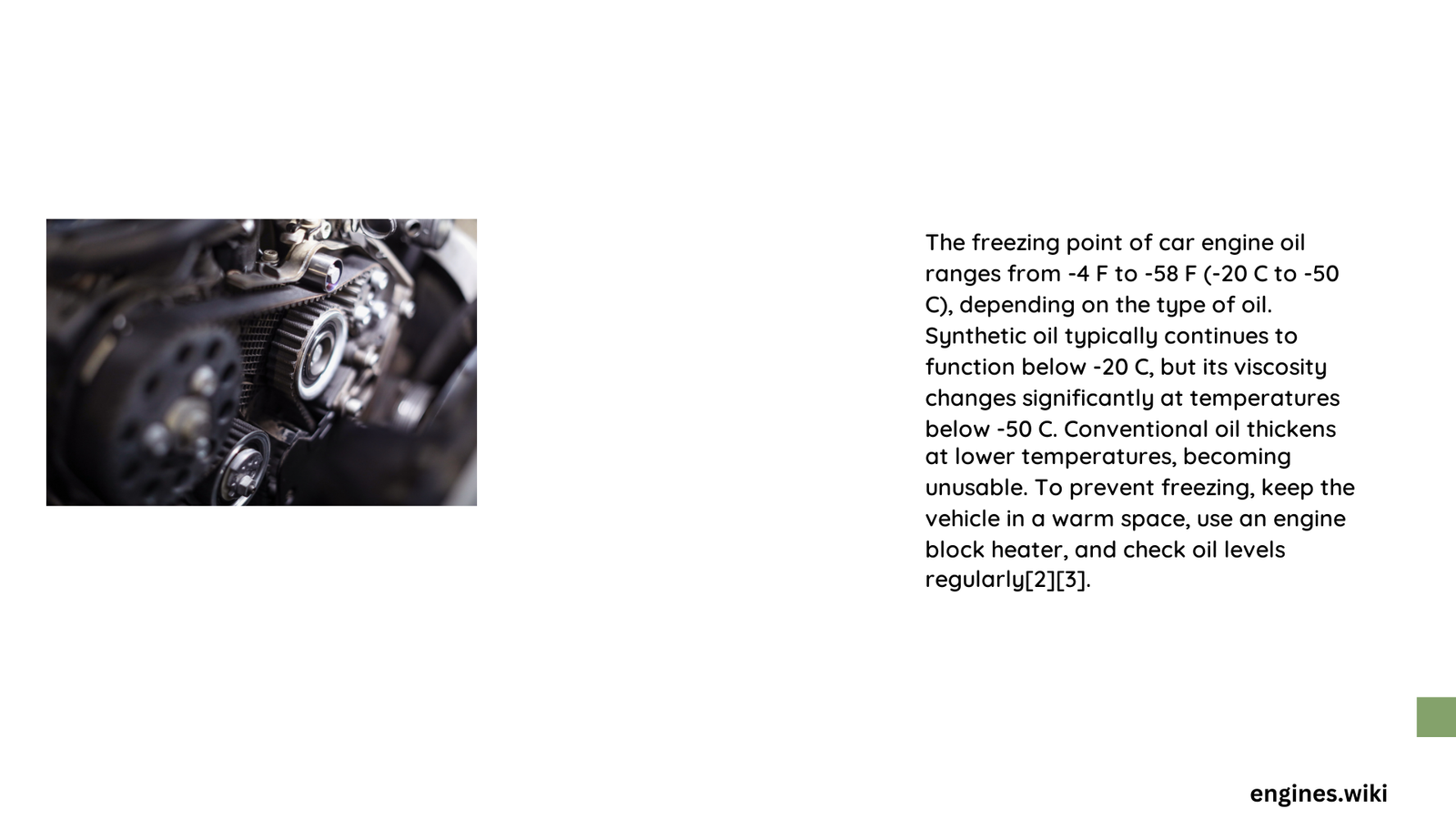Car engine oil freezing melting point represents a complex thermal dynamic where petroleum-based lubricants transform their molecular structure under extreme temperature conditions. Understanding these intricate changes becomes crucial for vehicle owners seeking optimal engine performance, particularly in regions experiencing significant temperature fluctuations that challenge traditional lubrication mechanisms.
What Determines Car Engine Oil Freezing Point?
Car engine oils do not technically “freeze” like water, but they experience significant viscosity changes that dramatically impact engine performance. The freezing point is more accurately described as the temperature where oil becomes too thick to flow effectively.
Key Factors Influencing Oil Viscosity
| Oil Type | Low-Temperature Performance | Viscosity Range |
|---|---|---|
| Synthetic Oil | Excellent (-40°F to -60°F) | Maintains fluidity |
| Conventional Oil | Limited (-4°F to -20°F) | Rapidly thickens |
| Synthetic Blend | Moderate (-20°F to -40°F) | Intermediate performance |
Why Does Oil Thickness Matter?
When engine oil becomes excessively thick, several critical issues emerge:
- Reduced Lubrication: Thick oil cannot circulate efficiently
- Increased Engine Wear: Inadequate oil flow causes friction
- Harder Engine Starts: Cold, dense oil strains starter motors
- Potential Component Damage: Extreme viscosity changes stress engine parts
How Cold Can Different Oils Perform?

Synthetic Oil Performance
Synthetic oils demonstrate remarkable low-temperature characteristics:
– Maintains fluidity down to -50°C
– Provides superior engine protection
– Reduces cold-start friction
– Minimizes potential engine wear
Conventional Oil Limitations
Conventional oils face significant challenges:
– Contains wax particles that solidify quickly
– Performance degrades around -20°C
– Requires longer warm-up periods
– More susceptible to viscosity breakdown
Strategies for Protecting Engine in Extreme Temperatures
- Select Appropriate Viscosity Grade
- Use multi-grade oils (e.g., 5W-30)
- Match oil to expected temperature range
-
Consult vehicle manufacturer recommendations
-
Regular Oil Maintenance
- Change oil according to service intervals
- Use high-quality synthetic or synthetic blend
-
Monitor oil condition during seasonal transitions
-
Additional Cold-Weather Precautions
- Park in heated/sheltered areas
- Use engine block heaters
- Consider winter-specific oil formulations
Scientific Explanation of Oil Molecular Behavior
At molecular levels, oil experiences phase transitions where hydrocarbon chains:
– Compress and contract
– Reduce intermolecular spacing
– Increase resistance to flow
– Modify lubricant performance characteristics
Recommended Oil Viscosity Ranges
| Temperature Range | Recommended Oil Viscosity |
|---|---|
| Below 0°F | 0W-30 or 0W-40 |
| 0°F to 32°F | 5W-30 |
| Above 32°F | 10W-30 or 10W-40 |
Conclusion
Understanding car engine oil freezing melting point requires comprehensive knowledge of petroleum chemistry, thermal dynamics, and automotive engineering principles. Selecting appropriate oil and maintaining proper lubrication practices ensures optimal engine performance across diverse environmental conditions.
Pro Tips
- Always check manufacturer specifications
- Use synthetic oils for extreme temperature regions
- Perform regular oil analysis
- Monitor engine performance during seasonal changes
Reference:
– SAE International Oil Viscosity Standards
– American Petroleum Institute Guidelines
– Society of Automotive Engineers Research
